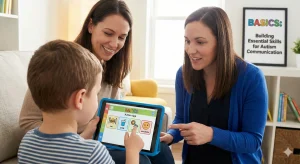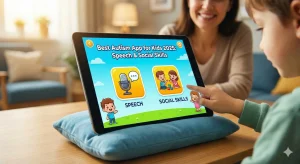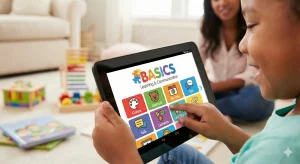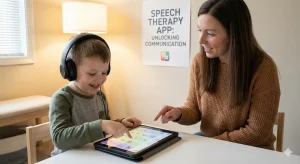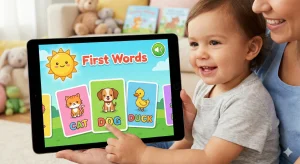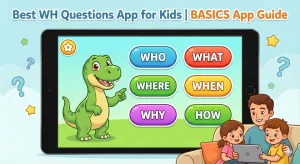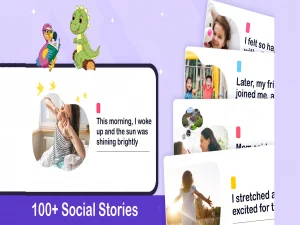Autism and ADHD: Overlapping Symptoms and Dual Diagnosis Explained
Last Updated: May 16, 2025
Raising a child with both autism and ADHD can feel overwhelming—but you’re not alone. Many parents face the same daily challenges, from communication struggles to managing routines and emotional outbursts. The good news? There are proven therapies and strategies that can help your child thrive. In this guide, we’ll explore the best therapy options for autism and ADHD, offering clear, parent-friendly advice and support. Whether you’re just starting out or looking to adjust your child’s care plan, this article is here to support you every step of the way.
Book Free Autism Session
Concerned about your child’s development? Talk to our autism expert online for free. Get personalized consultation and expert next steps.
What is Autism and ADHD?
Understanding your child’s behavior can feel like putting together a puzzle—especially when signs of autism or ADHD begin to show. These are two common neurodevelopmental conditions that affect how children learn, communicate, and interact with the world around them.
Understanding Autism Spectrum Disorder
Autism Spectrum Disorder (ASD) affects how a child communicates, socializes, and reacts to their environment. It’s called a spectrum because every child is different. Some kids might speak late, avoid eye contact, or enjoy doing the same things repeatedly. Others may be highly verbal but still struggle with social cues or changes in routine.
Key signs of autism in children:
- Delayed speech or limited verbal communication
- Difficulty understanding social rules or interactions
- Repetitive behaviors or fixations on certain objects
- Strong reactions to sounds, lights, or textures
- Prefers playing alone rather than with peers
Also read: Early Signs of Autism in Children: 7 Key Indicators
What Does ADHD Mean in Children?
ADHD (Attention-Deficit/Hyperactivity Disorder) is mostly about how the brain manages focus, energy, and self-control. Kids with ADHD aren’t “bad” or “lazy”—their brains are just wired a bit differently, making it harder to stay still, follow instructions, or finish tasks.
Common signs of ADHD in children:
| Type | Common Behaviors |
|---|---|
| Inattentive | Easily distracted, forgets things, can’t focus for long |
| Hyperactive | Constantly moving, talks a lot, can’t sit still |
| Impulsive | Interrupts, acts without thinking, struggles to wait |
Can Autism and ADHD Occur Together?
Yes, a child can have both autism and ADHD. This is known as a dual diagnosis. In fact, it’s more common than most parents realize. Research shows that around 30–50% of children with autism also have ADHD.
Here’s where it can get tricky:
Autism and ADHD have overlapping symptoms—like trouble with attention, emotional regulation, or social interactions. That’s why it’s sometimes hard to tell them apart without professional help.
How they can overlap:
| Shared Traits | Autism Only | ADHD Only |
|---|---|---|
| Trouble focusing | Repetitive behaviors | Risk-taking behavior |
| Sensory sensitivities | Avoids eye contact | Talks excessively |
| Social challenges | Delayed speech or no speech | Constant fidgeting |
Common Overlapping Symptoms of Autism and ADHD
If you’ve ever wondered whether your child’s behaviors are linked to autism, ADHD, or both—you’re not alone. These two conditions often share similar traits, making it tricky for parents to tell the difference. Let’s break down the overlapping symptoms of autism and ADHD to help you understand what might be going on.
Remember, every child is different, and no single symptom means a diagnosis. But knowing what to look for is the first step toward finding the right support.
Trouble with Focus and Attention
Children with both autism and ADHD often find it hard to concentrate, especially on tasks they find boring or unfamiliar. But the reasons for this can vary.
- In ADHD, focus is often scattered—they might start one thing and jump to another.
- In autism, focus might be intense—but only on a topic of special interest.
What it may look like:
- Hyperfocus on one toy, video, or topic for long periods
- Difficulty staying seated during homework or class
- Zoning out when being spoken to
- Forgetting instructions or skipping steps
Social Skills Challenges
This is another big area where autism and ADHD symptoms tend to overlap. Kids may struggle to connect with others, but again, the “why” can be different.
- Autistic children may have a hard time reading social cues or showing emotions.
- Kids with ADHD may interrupt or miss cues because they’re too distracted or impulsive.
Common signs:
- Difficulty making or keeping friends
- Interrupting during conversations
- Not understanding personal space
- Seeming unaware of others’ feelings or reactions
Emotional Regulation and Impulsivity
Ever feel like your child goes from calm to meltdown in seconds? That’s likely because kids with autism or ADHD often have trouble managing their emotions.
- Impulsivity is a hallmark of ADHD—they may act before thinking.
- Autistic kids may feel overwhelmed by emotions but have trouble expressing them clearly.
You might notice:
- Sudden outbursts or crying without clear reason
- Difficulty calming down after getting upset
- Saying or doing things without thinking
- Trouble adjusting to small changes in plans
Sensory Sensitivities in Autism and ADHD
Loud noises, scratchy clothes, bright lights—these things may feel like small annoyances to us, but for some children, they can be overwhelming. This is especially common in kids with autism, but children with ADHD can experience it too.
Sensory triggers to watch for:
- Covering ears during loud sounds
- Avoiding certain textures or foods
- Constantly seeking movement or crashing into things
- Easily overwhelmed in crowded or noisy places
Here’s a quick comparison:
| Sensory Reaction | Autism | ADHD |
|---|---|---|
| Avoids touch or textures | Very common | Sometimes present |
| Seeks constant movement | Sometimes (sensory seeking) | Often (due to hyperactivity) |
| Trouble sitting still | Usually due to sensory needs | Usually due to restlessness |
Autism vs ADHD: Key Differences You Should Know
Even though autism and ADHD can sometimes look alike, they are two different conditions. Understanding the key differences between them helps parents better support their child and seek the right kind of therapy.
Let’s explore where autism and ADHD differ—especially in how a child speaks, behaves, and handles daily life.
Communication and Speech
One of the first signs many parents notice is a difference in speech and communication.
- Children with autism may start speaking late or not at all. They might struggle with two-way conversations or avoid using gestures.
- Kids with ADHD usually speak on time but may interrupt, speak too quickly, or go off-topic.
Comparison Table:
| Communication Style | Autism | ADHD |
|---|---|---|
| Speech delay | Common | Rare |
| Difficulty with back-and-forth talk | Yes | Sometimes (due to impulsivity) |
| Talks a lot or interrupts | Less likely | Very common |
| Uses gestures or facial cues | Often limited | Usually present |
Know more about our article on ADHD and Autism: Similarities and Differences
Behavior and Repetitive Actions
Behavior tells us a lot about how a child sees and feels the world.
- Autistic children often show repetitive behaviors, like lining up toys, repeating phrases, or flapping hands. These actions are comforting or help them deal with stress.
- Kids with ADHD tend to be more impulsive. They may act without thinking or shift from one activity to another without finishing.
What to watch for:
- Autism: Same routines, echolalia (repeating words), strong interest in specific topics
- ADHD: Risk-taking behavior, poor impulse control, boredom with routine
Understanding these patterns helps parents choose strategies that reduce stress and improve behavior at home.
Attention Span and Hyperactivity
When it comes to attention, both conditions struggle—but in very different ways.
- ADHD is marked by clear issues with attention and hyperactivity. Kids may fidget, talk non-stop, or forget what they were doing.
- Autism may also involve distraction, but some children hyperfocus on topics they love, tuning everything else out.
Cognitive Flexibility and Daily Routines
This is where one of the biggest differences between autism and ADHD becomes clear.
- Children with autism usually prefer sameness. They might get upset if their routine changes or if things are out of order.
- Kids with ADHD, on the other hand, often struggle with following routines at all. They might forget tasks or jump from one thing to the next without structure.
Key points:
- Autism: Needs consistency, dislikes change, may have rigid thinking
- ADHD: Forgets steps, loses track of time, may avoid structure
Dual Diagnosis: What It Means and Why It Matters
Many parents feel confused when their child shows signs of both autism and ADHD. Are they related? Is it one condition or two? The truth is—co-occurring autism and ADHD is not only possible but more common than you might think. This is called a dual diagnosis, and understanding it can help you better support your child’s growth.
Let’s break down what it means, how it’s diagnosed, and why recognizing both is so important.
How Therapists Diagnose Both Conditions Together
Getting a dual diagnosis of autism and ADHD isn’t always straightforward. Many symptoms overlap—like trouble with focus, emotional outbursts, or social struggles—so it takes a trained eye to spot the difference.
Here’s how professionals typically approach it:
- Developmental history review – Speech milestones, play behaviors, and social interaction are examined.
- Behavioral observation – How the child acts in different environments is closely watched.
- Standardized assessments – Tools like the ADOS (for autism) and Conners Rating Scale (for ADHD) are used.
- Input from parents and teachers – Their feedback plays a crucial role in the final diagnosis.
Common Signs of Dual Diagnosis in Children
When autism and ADHD co-occur, the signs can mix in unique ways. You might notice a blend of behaviors from both sides of the spectrum.
Common signs of dual diagnosis:
- Delayed speech or language mixed with impulsive talking
- Difficulty making friends and easily distracted in conversations
- Repetitive actions (like hand-flapping) along with hyperactivity
- Trouble shifting attention + extreme focus on one interest
- Strong emotional reactions with poor self-regulation
- Sensory issues paired with restlessness or fidgeting
Here’s a quick visual guide:
| Behavior Type | Common in Dual Diagnosis |
|---|---|
| Focus and attention issues | Yes |
| Repetitive behaviors | Yes |
| High energy or fidgeting | Yes |
| Sensory sensitivities | Often |
| Difficulty with routines | Yes |
| Struggles with social rules | Yes |
Myths and Misunderstandings About Dual Diagnosis
Let’s clear up some common misconceptions. Understanding what dual diagnosis is not can be just as helpful as knowing what it is.
Top myths about dual diagnosis autism and ADHD:
- “A child can only have one condition.”
Truth: It’s completely possible—and common—for both to exist together. - “ADHD symptoms are just part of autism.”
Truth: While similar, ADHD is a separate diagnosis with its own challenges and treatments. - “Medication can solve everything.”
Truth: While medication may help with ADHD symptoms, children with dual diagnosis benefit most from a mix of behavioral therapy, routines, and support strategies. - “They’ll grow out of it.”
Truth: With the right intervention, children improve—but they need long-term guidance tailored to their unique needs.
Therapies That Help with Both Autism and ADHD
Getting the right therapy for autism and ADHD can feel overwhelming, especially with so many options out there. But the good news? There are proven approaches that work well for children with a dual diagnosis, helping them grow, communicate, and feel more in control.
Let’s walk through the most effective therapies and how they support your child’s journey.
Behavioral Therapy (ABA, CBT)
Behavioral therapy is often the first step when supporting children with both autism and ADHD.
Applied Behavior Analysis (ABA)
- Structured and highly personalized
- Breaks down skills into small, manageable steps
- Reinforces positive behavior through rewards
ABA is especially useful for building social skills, reducing problem behaviors, and teaching communication.
Read more: How Behavioral Therapy Helps Kids with ADHD
Cognitive Behavioral Therapy (CBT)
- Helps children understand and manage their feelings
- Builds self-awareness and coping strategies
- Great for older kids who struggle with anxiety, impulsivity, or frustration
Quick tip: ABA is often used for autism; CBT is more common with ADHD. But many children benefit from a combination, especially when guided by trained therapists like those at Wellness Hub.
Occupational Therapy and Sensory Integration
Occupational therapy (OT) is all about helping your child with daily tasks—getting dressed, writing, eating, or simply feeling comfortable in their body. Kids with a dual diagnosis often have sensory processing issues, meaning they react strongly to sights, sounds, touch, or movement.
How OT helps:
- Improves motor skills and coordination
- Supports focus and attention during tasks
- Builds routines and independence
- Uses sensory integration therapy to manage sensitivities (like noise or texture)
If your child avoids certain clothes or can’t sit still at dinner, OT can make a noticeable difference.
Speech and Language Support
Many kids with autism and ADHD face challenges with communication—from delayed speech to trouble organizing thoughts.
Speech therapy can help by:
- Improving vocabulary and sentence building
- Practicing turn-taking and conversation skills
- Strengthening listening and comprehension
- Helping with clarity and articulation
Medication Considerations: What Parents Should Know
Sometimes, behavior therapies are not enough on their own—especially if ADHD symptoms like hyperactivity, impulsiveness, or inattention interfere with learning and daily life.
What to know:
- ADHD medications (like stimulants) may help improve focus and reduce impulsivity.
- For autistic children, medication is used more cautiously and usually to manage specific symptoms (like anxiety or sleep issues).
- There’s no one-size-fits-all—some children benefit, others may not.
- Side effects can include appetite changes, sleep issues, or mood swings.
Role of Wellness Hub in Supporting Your Child
At Wellness Hub, we understand that no two children are alike. That’s why our support for dual diagnosis is:
- Expert-led: Therapists trained in both autism and ADHD strategies
- Home-based: Online sessions that fit your schedule
- Personalized: Custom plans based on your child’s needs and goals
- Resource-rich: Therapy tools, activities, and progress trackers
Whether you’re looking for speech therapy, behavioral support, or parent guidance, our team is here to walk with you every step of the way.
How Parents Can Support Children with Autism and ADHD
Raising a child with autism and ADHD can feel like walking a tightrope. Some days are calm, others full of surprises. But you’re not alone—and with the right tools, your support can make a powerful difference in your child’s progress.
Here are simple, practical parenting tips for autism and ADHD that you can use daily to build connection, reduce stress, and help your child thrive.
Home Routines and Visual Schedules
Children with autism and ADHD both benefit from predictable routines. They feel safer when they know what’s coming next. But structure doesn’t have to be rigid—it just has to be clear.
Why it works:
- Reduces anxiety about transitions
- Builds independence
- Improves time management and focus
Tips to try at home:
- Use a visual schedule with pictures or icons
- Keep daily activities in the same order (e.g., wake up → brush teeth → breakfast)
- Give warnings before transitions, like “5 more minutes of playtime”
- Include “break time” or “calm corner” in the routine
Positive Reinforcement and Consistent Boundaries
Children with ADHD and autism often need clear feedback on what’s expected and reassurance when they do well. Instead of only pointing out what went wrong, focus on what went right.
Use the “Catch Them Being Good” method:
- “I love how you packed your bag all by yourself!”
- “Thank you for using your calm words!”
At the same time, boundaries should be firm but gentle. Children feel more secure when the rules don’t keep changing.
Parenting dos:
- Praise efforts, not just results
- Be consistent with rules and consequences
- Use visual behavior charts to track progress
Know more: Top Positive Reinforcement Methods for Parents
School Support and IEP Plans
Your child spends a large part of the day at school. So having the right school support is just as important as home routines. For children with dual diagnosis, an Individualized Education Plan (IEP) can be a game-changer.
Key parts of an effective IEP:
- Speech therapy or occupational therapy during school hours
- Extra time for tests or instructions
- Breaks during long tasks
- A calm-down area in class
- Use of visual or written instructions
Stay in touch with teachers. Share what’s working at home and ask for regular updates. Your voice matters in every IEP meeting.
School Support and IEP Plans
Your child spends a large part of the day at school. So having the right school support is just as important as home routines. For children with dual diagnosis, an Individualized Education Plan (IEP) can be a game-changer.
Key parts of an effective IEP:
- Speech therapy or occupational therapy during school hours
- Extra time for tests or instructions
- Breaks during long tasks
- A calm-down area in class
- Use of visual or written instructions
Managing Meltdowns and Emotional Outbursts
Meltdowns aren’t tantrums—they’re intense responses to overwhelm. And yes, they’re common in children with ADHD and autism. Instead of punishment, what your child really needs is support and calm.
Helpful steps during a meltdown:
- Stay calm—your energy affects theirs
- Use soft, clear words: “You’re safe. I’m here.”
- Offer a quiet space with comforting items (like noise-canceling headphones or a weighted toy)
- Wait until they’ve calmed down to talk
To prevent future meltdowns:
- Learn your child’s triggers (crowds, loud sounds, changes in plan)
- Use sensory breaks before overwhelm sets in
- Teach simple emotion words or visuals (like “I need a break” cards)
Explore more: Autism Meltdowns vs Tantrums: What Parents Need to Know
Conclusion
Every child with autism and ADHD has their own way of seeing the world. With the right support and early help, they can learn, grow, and shine. Simple routines, therapy, and understanding can make daily life easier for both you and your child. At Wellness Hub, our expert therapists offer personalized online therapy programs that support your child’s speech, behavior, and learning—all from home. Start early, stay consistent, and believe in your child’s journey. You’re not alone—we’re here to help, every step of the way.
Frequently Asked Questions:
1. Can a child have both autism and ADHD?
Yes, many children are diagnosed with both autism and ADHD, which is called a dual diagnosis. It means they show traits of both conditions, like having trouble focusing, being very active, and also struggling with social or communication skills. It’s more common than people think, and with the right support, children can do very well.
2. What are the common symptoms of autism and ADHD in children?
Overlapping symptoms of autism and ADHD include:
- Difficulty paying attention or staying on task
- Being overly active or impulsive
- Trouble making friends or understanding social rules
- Sensory issues like reacting strongly to lights or sounds
- Emotional outbursts or quick mood changes
These signs may look similar in both conditions but happen for different reasons.
3. How is autism different from ADHD?
The key difference between autism and ADHD is how each one affects the child:
- Autism mainly affects social interaction, communication, and behavior. Kids may avoid eye contact, repeat actions, or speak late.
- ADHD mostly affects attention, activity levels, and self-control. Kids may interrupt, lose focus, or move constantly.
Sometimes, they can overlap, making it hard to tell them apart without expert help.
4. How do doctors diagnose both autism and ADHD?
Doctors and specialists look at your child’s developmental history, behavior at home and school, and do tests or interviews. They may use tools like the ADOS (for autism) or ADHD behavior rating scales. Diagnosis of co-occurring autism and ADHD takes time, and input from parents is very important.
5. What therapies help with autism and ADHD together?
The best therapy for autism and ADHD is often a mix of:
- ABA (Applied Behavior Analysis) – builds skills step by step
- CBT (Cognitive Behavioral Therapy) – helps older children manage emotions
- Occupational Therapy – supports sensory needs and daily routines
- Speech Therapy – improves communication
6. What is the best parenting approach for kids with autism and ADHD?
Children with autism and ADHD do best with structure, patience, and encouragement.
Try these tips:
- Use visual routines so they know what’s next
- Praise good behavior often
- Set clear, consistent rules
- Stay calm during meltdowns
- Break tasks into small steps
These methods reduce stress and help children feel safe and understood.
7. Is it harder to manage both autism and ADHD together?
Managing both autism and ADHD can be more challenging because each condition affects different areas—like attention, behavior, and communication. But with the right combination of therapies, structure at home, and school support, children can thrive. Every child is unique, so it’s important to tailor strategies to their specific needs and strengths.
8. What are visual schedules and how do they help?
Visual schedules are picture-based routines that show your child what will happen next—like brushing teeth, playtime, or school time. They are very helpful for children with autism and ADHD because:
- They reduce anxiety about changes
- Help with focus and independence
- Build a sense of routine and control
9. How can schools support children with autism and ADHD?
Schools can provide Individualized Education Plans (IEPs) to help your child succeed. Support may include:
- One-on-one learning support
- Extra breaks during the day
- Speech or occupational therapy
- Visual aids and social skills training
- A quiet room to calm down when needed
Stay in touch with teachers to make sure the plan is followed well.
10. Where can I get help for my child with autism and ADHD?
You can start with online therapy at Wellness Hub. We offer expert guidance from licensed therapists, home-friendly resources, and custom therapy programs that support speech, behavior, and everyday life. Whether your child is newly diagnosed or needs continued help, we’re here to support your journey.
About the Author:
Shravanaveena Gajula
M.Sc ., Speech and Language Pathology (5+ years of experience)
Shravanaveena Gajula is a dedicated Audiologist and Speech-Language Pathologist with a BASLP and an M.Sc in Speech and Language Pathology. With experience spanning multiple settings, including Wellness Hub and Ashray Akruti, Veena specializes in a wide range of disorders from developmental issues in children to speech and language assessments in adults. Her expertise includes parent counseling, managing speech sound and fluency disorders, and creating individualized therapy programs. Veena is also PROMPT certified and an author of several insightful blogs on speech and language pathology, aiming to educate and assist caregivers in supporting their loved ones.
Book your Free Consultation Today
Parent/Caregiver Info:
Client’s Details:
* Error Message

